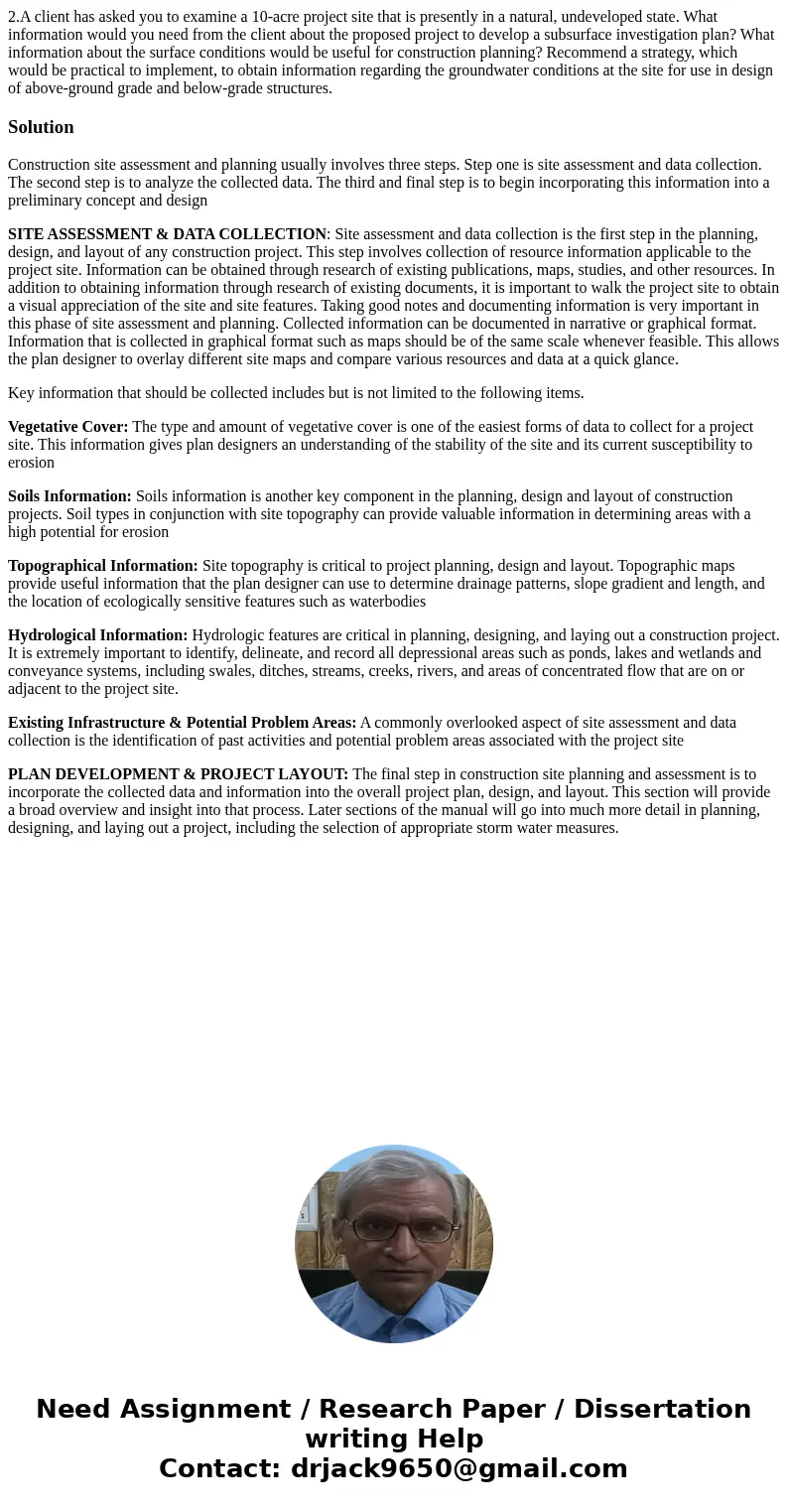2A client has asked you to examine a 10acre project site tha
Solution
Construction site assessment and planning usually involves three steps. Step one is site assessment and data collection. The second step is to analyze the collected data. The third and final step is to begin incorporating this information into a preliminary concept and design
SITE ASSESSMENT & DATA COLLECTION: Site assessment and data collection is the first step in the planning, design, and layout of any construction project. This step involves collection of resource information applicable to the project site. Information can be obtained through research of existing publications, maps, studies, and other resources. In addition to obtaining information through research of existing documents, it is important to walk the project site to obtain a visual appreciation of the site and site features. Taking good notes and documenting information is very important in this phase of site assessment and planning. Collected information can be documented in narrative or graphical format. Information that is collected in graphical format such as maps should be of the same scale whenever feasible. This allows the plan designer to overlay different site maps and compare various resources and data at a quick glance.
Key information that should be collected includes but is not limited to the following items.
Vegetative Cover: The type and amount of vegetative cover is one of the easiest forms of data to collect for a project site. This information gives plan designers an understanding of the stability of the site and its current susceptibility to erosion
Soils Information: Soils information is another key component in the planning, design and layout of construction projects. Soil types in conjunction with site topography can provide valuable information in determining areas with a high potential for erosion
Topographical Information: Site topography is critical to project planning, design and layout. Topographic maps provide useful information that the plan designer can use to determine drainage patterns, slope gradient and length, and the location of ecologically sensitive features such as waterbodies
Hydrological Information: Hydrologic features are critical in planning, designing, and laying out a construction project. It is extremely important to identify, delineate, and record all depressional areas such as ponds, lakes and wetlands and conveyance systems, including swales, ditches, streams, creeks, rivers, and areas of concentrated flow that are on or adjacent to the project site.
Existing Infrastructure & Potential Problem Areas: A commonly overlooked aspect of site assessment and data collection is the identification of past activities and potential problem areas associated with the project site
PLAN DEVELOPMENT & PROJECT LAYOUT: The final step in construction site planning and assessment is to incorporate the collected data and information into the overall project plan, design, and layout. This section will provide a broad overview and insight into that process. Later sections of the manual will go into much more detail in planning, designing, and laying out a project, including the selection of appropriate storm water measures.

 Homework Sourse
Homework Sourse